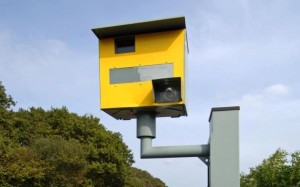Speed cameras and fines
You will usually know if you’ve been caught by a speed camera as it will emit two bright flashes as you drive by. And there is also something called an average speed camera system which consists of a series of CCTV-style cameras that record your car registration as you pass. The system then calculates how fast you’ve been travelling between each camera and from this works out your average speed. Beware – if it’s above the speed limit, it’s going to cost you.
From 2017, speeding fines have increased. The minimum fine for speeding is £100, though it could be up to a whopping £2500 if you are caught significantly speeding on the motorway and you find yourself having to go to court.
The three main ‘bands’ of speeding are now:
BAND A – this is the lowest level of speeding, for which you can expect to be fined around 50% of your weekly income. An example would be driving between 21mph and 30mp in a 20mph zone.
BAND B – this is for more serious cases of speeding, where you could pay a fine of 100% of your weekly income. For example, if you were driving 31mph to 40mph in a 20mph zone.
BAND C – this is for the most extreme cases of speeding, and for which you could pay a fine of 150% of your weekly income. An example would be driving 41mph or above in a 20mph zone.
It’s important to remember that there is a degree of flexibility in terms of the fines, depending on exceptional circumstances such as a genuine emergency. There are also speed awareness courses which are usually offered as an alternative. Although you can’t appeal a fine, there is the option to reject it in which case you’d go to court instead. However, we would advise to avoid this if at all possible as it can be a difficult and costly route to take.







